Choice views of the Muong Hoa valley and Mount Fansipan are the prime commodity on sale in Lao Cai's signature destination, Sapa, a hill station high in the mountains and a vestige of the French colonial era.
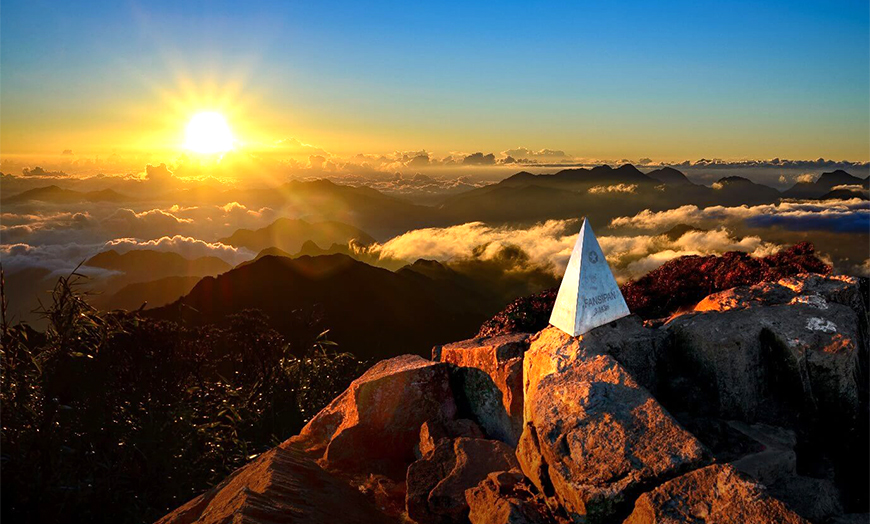
Sapa ranks along Ha Long Bay and Hoi An in terms of attracting tourists solely on the merit of its natural beauty and surrounding attractions. It's particularly rich in opportunities for treks, homestays and (on clear days) the kinds of panoramic views that leave travel writers searching for fresh adjectives and a larger camera memory card.
Mountaintop Sapa began life as a hilltop retreat for French colonialists desperate to escape the searing heat of the Vietnamese plains. They chose the lofty cool of Fansipan's surrounds, and it's easy to see why — the humidity of Hanoi peels away as you ascend the mountain peaks skirted with finely-sculptured, emerald-green rice terraces.
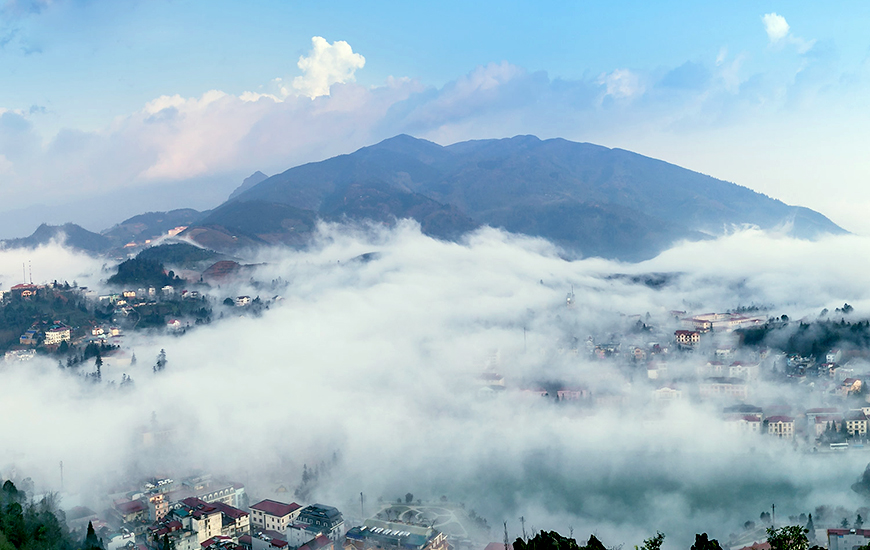
If you're only in Sapa for a few days, be forewarned that the views do not come with a money-back guarantee. The best time to visit Sapa is in the summer months of August to December, when skies are more likely to be clear. These months are rainier but they are also warmer, and sometimes you can't beat a nice summer rain for atmosphere — showers are typically brief, but it pours in buckets. Winter can be cold, foggy and rainy, but every three or four days, the weather clears and the views are more gorgeous than they are any other time of year.
No matter what time of year you arrive, Sapa has its drawbacks and advantages. Your top priority when ing a room from December to February should be heat. Some places have electric blankets or heaters built into the bed frame, but that means the rest of the room is going to be freezing. Electric space heaters are better, and best yet, many places come with wood-burning fire-places. Make sure the fireplace works before you hand over your passport some we saw were only ornamental and check on the price of firewood as it rarely comes free and burns quickly.
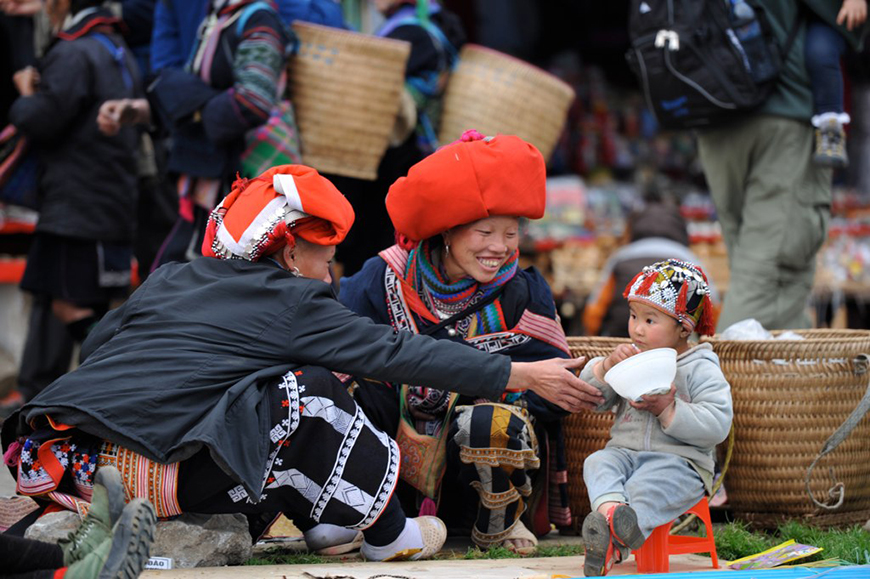
Around Sapa you may come across a multitude of ethnic minorities. Chief among them are the Hmong (pronounced MONG), often referred to as the Black Hmong partly because their dress is a very dark, almost black, indigo ornamented with colourful brocade and silver jewellery, but mostly because of their black, fez-like headgear. The second largest group are the Dao, who also dress in dark clothes. The women of those referred to as Red Dao wrap up their hair in a bright red scarf bedecked with silver-beaded tassels while those of the Black Dao wear distinctive headwear — a pile of coiled, braided hair, with an elaborate, rectangular ornament of silver metal sticking out of the top. They will happily remove their headdress for tourists to show that it's just a hat and not their real hair.
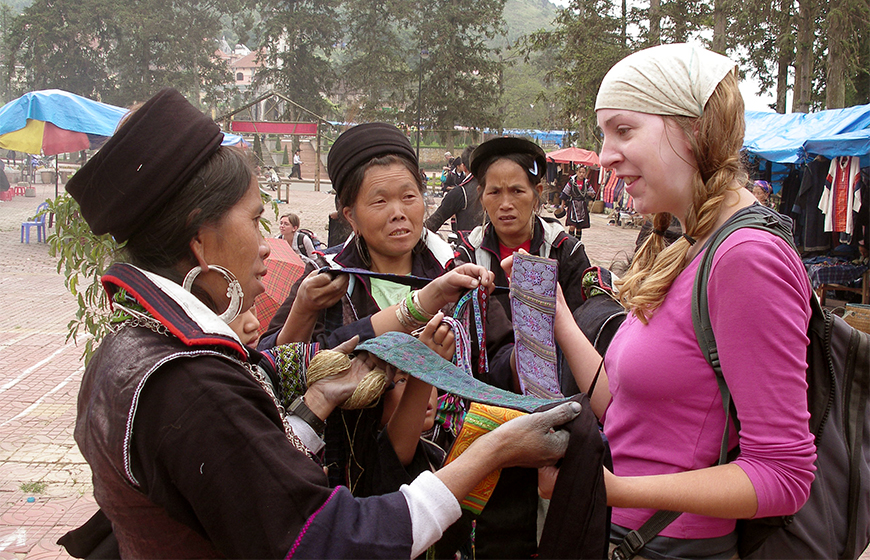
Since the advent of tourism these tribes have reinvented themselves as hawkers of handmade trinkets and textile goods. They are the genuine 'native' inhabitants of the area, and they clearly regard all of the political nonsense that has been going on for the past 1,000 years as background noise. People invading and leaving. Governments coming and going. Many tribes straddle the border with China, which they ignore, circulating freely on both sides. As far as they are concerned, the lowland ethnic Vietnamese who have shown up in recent years to make a buck are simply arrivistes.
Sapa is sharply stratified — almost all the businesses in town are owned and staffed by Viet Kinh, and the only trade the tribes do is on the streets in the form of handicrafts, fruits and vegetables.
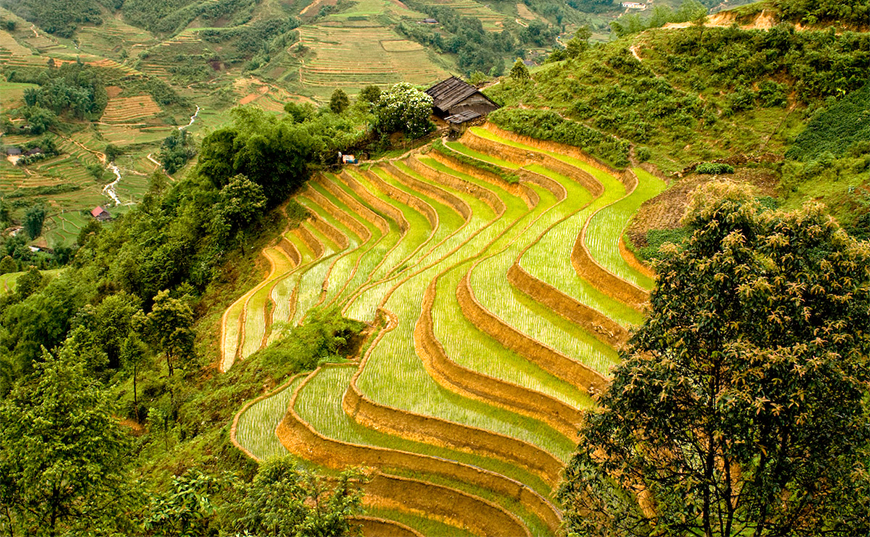
The fact that the tribes continue to live a very basic existence is partly economic and partly cultural. To them, a rice field, a garden, some cattle and a stilt house are all the prosperity they ever hoped for, going back countless generations. Homestays in these same stilt houses are very popular, of course, though some villages are more 'authentic' than others. The most-easily accessed destinations feel more like 'theme resorts' for tourists, where they get to rough it local-style, though technically they are real villages. If you venture to the more remote hamlets, they offer fascinating glimpses of lifestyles seemingly stolen from history.
Life is probably better for the tribes than it once was, but it may still take all day for vendors to make a few dollars profit. Despite the steady flow of tourists, supply far outweighs demand. You may notice that if you wander beyond the last tourist-oriented business on any street, there are precious few businesses thriving on local dollars alone. In a sense, it's not really a town at all — the tribes live elsewhere and come into town to do business, often trudging along on foot for hours or nowadays just as likely to jump on the back of a motorbike. The ethnic Vietnamese, for their part, are from other cities in Vietnam. Many live in cheap, shabby rooms but it still takes a lot of postcards and sweet potatoes to make the monthly rent. And there are few other options than family farming, since there are no major industries in the area aside from tourism.
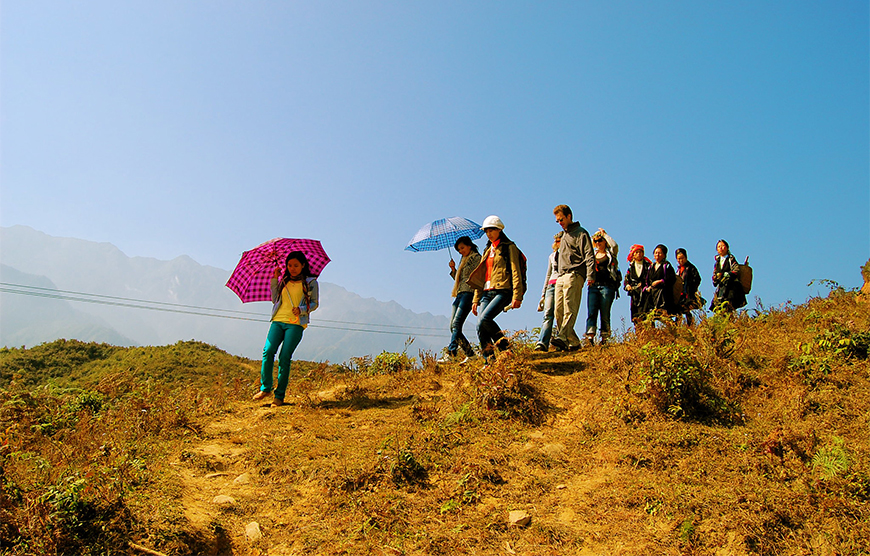
To describe Sapa as 'over-touristed' is a bit beside the point, since that is the sine qua non of its existence, which may be something to think about when you are having brocade thrust into your hands or being dragged against your will into a shop. Visitors are often surprised by both the ruthless selling prowess and candour of the minorities. If you feel you've just been cursed in Hmong after refusing to buy, rest assured, you probably have. But their cunning and sales routines come just as naturally as their giggles and smiles. The Hmong in particular are as tough as they are sweet and naive as they are savvy. Patience, curiosity and a sense of humour are requisite attributes for all visitors.
Orientation
Sapa town is set on a roughly north-south orientation, and you'll be heading north as you head up the hill away from Mt Fansipan into town and on towards the road to Lao Cai. The chief landmark is the old church sitting just above the pentagon-shaped town 'square'. It's actually a stadium built into the hillside, though we've never seen it used as such. The road along the south side of the church, crowded with market stalls, is Phan Xuan Huan — following the road to the end leads to some cheaper accommodation with lesser views. There are two sets of steps that lead down to Cau May, which may provide a good short-cut between the church and your hotel.
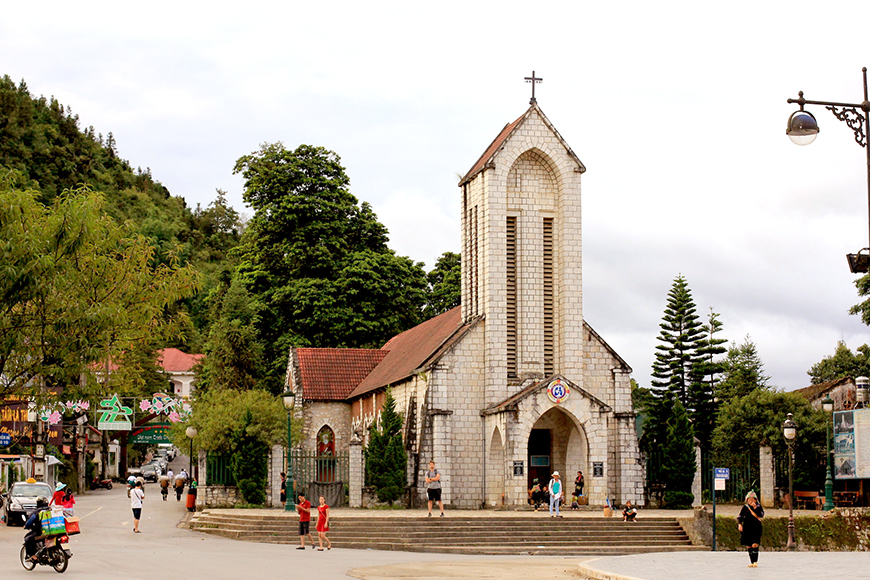
Cau May (Cloud Bridge) is the main thoroughfare for foreign tourists, and is crowded with restaurants serving western food. This street starts at the south side of the town square and terminates in a steep set of stairs lined with cheap rooms, let out by the Vietnamese who have come here to work. At the top of the stairs, you'll find one of the town's two ATMs that takes foreign cards.
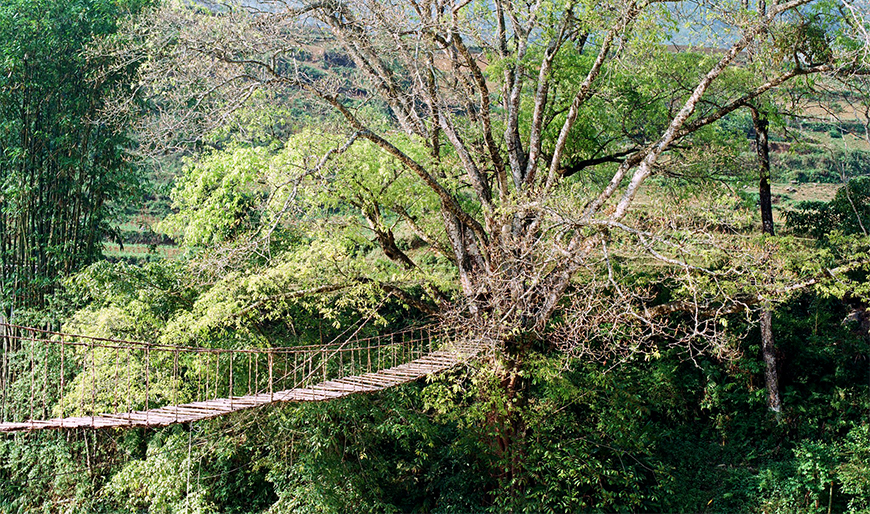
To the right and up a bit is Dong Loi, the alley where you'll find Chau Long Hotel. To the left, the road takes an extreme turn and technically becomes Muong Hoa, but places along both streets may refer to either name. Here you'll find places like the Lotus Hotel and the Pinocchio.. There's little to see past the Bamboo Sapa Hotel, but 25km further on is Ban Ho village.
The other road of interest is Thac Bac (silver waterfall) which ascends north from the town square up into the hills. Here you'll find Baguette and Chocolate, and further up, the Summit Hotel — and much further still, Lai Chau.

The road that crosses Cau May leads to places like the Cat Cat View and Boutique Hotel and then on to Cat Cat Village. Cat Cat is literally 'cascade', the French word for waterfall, subjected to the Vietnamese rules of pronunciation. The road is called Fansipan, after the mountain, via a variety of curious phonetic spellings involving the letter 'X'.
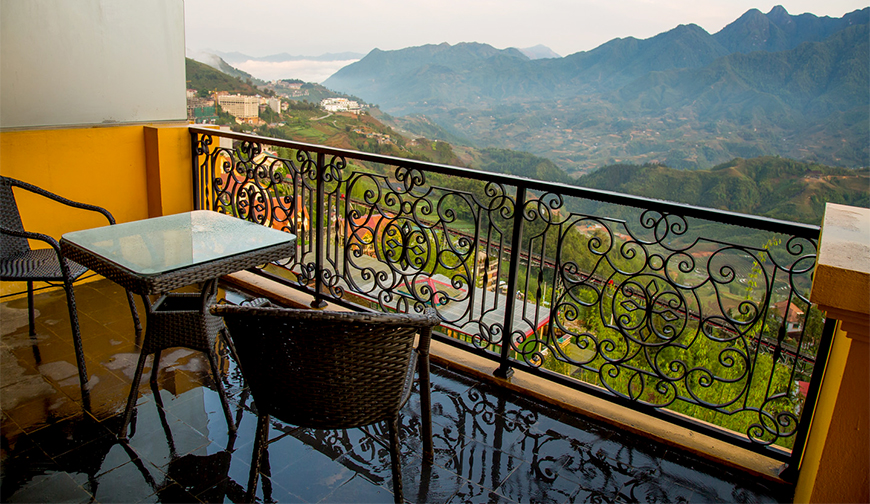
There's very little to lure you further north than the post office on Thach Son, along the fish-shaped park above the town square. Not even the bus station, since all the buses to Lao Cai and Lai Chau depart from in front of the church. Across from the bus station is the BIDV bank along with the town's other ATM. North of the bus station is the artificial Sapa Lake, which takes about an hour to walk around.
Tours and treks can be booked in advance in Hanoi, or on the spot in Sapa. You'll pay a bit more for the former, but to make sure you get the tour you want when you want, booking ahead in Hanoi provides more ease and security. Tours are offered absolutely everywhere in Sapa, and trying to pin down the best agency with the best tours for the best price is like trying to catch a wave on the sand. The bottom line is, don't pay more than you can afford, and Sapa is so beautiful, and the surrounds so intriguing, you'll walk away feeling you've got your money's worth, even if you paid a bit more than someone else for the same thing.
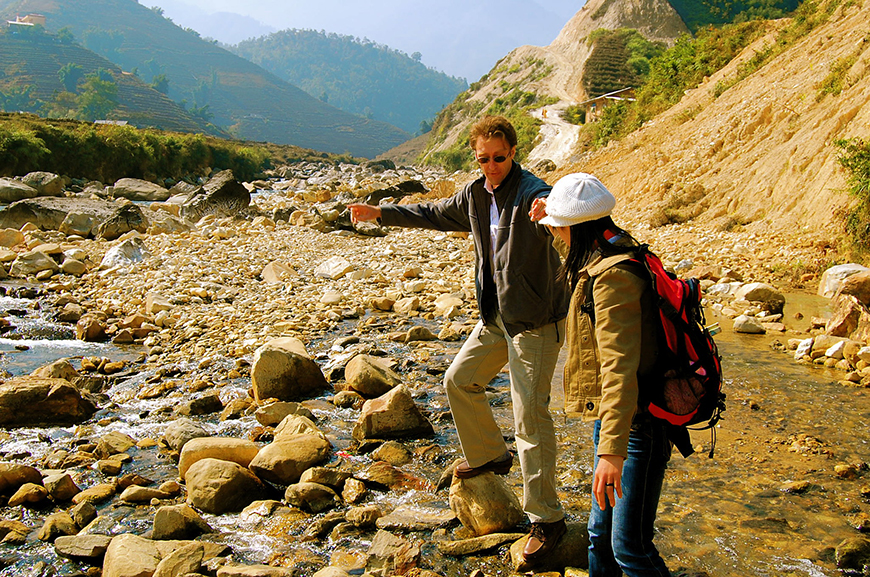
If you really want to re-distribute your western dollars directly to those who need it most, forget about the tour agencies and look out for the H'mong girls who, as well as touting their wares, will likely offer to take you to their village or on a tour of local villages. They can even offer homestays and their English is often very good. Motorbike drivers are also on hand if you prefer a tour on the back of a bike. It's best to work out a plan on your own first, and just tell your guide where you want to go.
BIDV Bank: Ngu Chi Son (across from the bus station), Sapa. T: (020) 387 2569; F: (020) 387 2636. Hours: Winter: 07:30 to 12:00 and 13:00 to 16:00, Summer: 07:00 to 11:30 and 13:30 to 16:30.
Main Post Office: Thanh Son, across from the park, Sapa. T: (020) 3871 298, F: (020) 387 1282. Hours: Winter: 07:30 to 18:00 and 19:00 to 20:30, Summer: 07:00 to 18:00 and 19:00 to 21:00. Long distance phone service available.